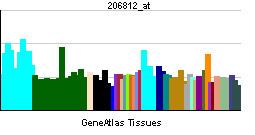Entrez 155 | Ensembl ENSG00000188778 | |
 | ||
Aliases ADRB3, BETA3AR, adrenoceptor beta 3 External IDs MGI: 87939 HomoloGene: 37250 GeneCards: ADRB3 | ||
The beta-3 adrenergic receptor (β3 adrenoreceptor), also known as ADRB3, is a beta-adrenergic receptor, and also denotes the human gene encoding it.
Contents
Function
Actions of the β3 receptor include
It is located mainly in adipose tissue and is involved in the regulation of lipolysis and thermogenesis. Some β3 agonists have demonstrated antistress effects in animal studies, suggesting it also has a role in the central nervous system (CNS). β3 receptors are found in the gallbladder, urinary bladder, and in brown adipose tissue. Their role in gallbladder physiology is unknown, but they are thought to play a role in lipolysis and thermogenesis in brown fat. In the urinary bladder it is thought to cause relaxation of the bladder and prevention of urination.
Mechanism of action
Beta adrenergic receptors are involved in the epinephrine- and norepinephrine-induced activation of adenylate cyclase through the action of the G proteins of the type Gs.
Agonists
Antagonists
Interactions
Beta-3 adrenergic receptor has been shown to interact with Src.
